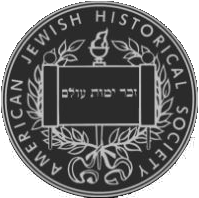1870
HIAS and the various chroniclers of HIAS have used many dates as the year HIAS was founded. We believe these early dates, in particular 1870-1884, refer to organizations with similar names and missions as HIAS, but which were not true predecessors of HIAS.
1889
Hebrew Sheltering House Association established. Originally called Hachnosas Orchim, the organization seems also to have gone by the name Hebrew Sheltering Home, adopting the name “Hebrew Sheltering House Association” in 1907. (Sometimes referred to as “Hebrew Sheltering House Association and Home for the Aged”).
1890
The Woman’s Auxiliary is founded by Rose N. Lesser. An auxiliary organization of the Hebrew Sheltering House Association, it was renamed “the Rose N. Lesser Auxiliary,” after its founder’s death in 1908.
1892
Ellis Island becomes official New York City control station for immigration.
1902

Max Meyerson serves as President of HIAS (1902-1909). On December 3, 1902, a mutual aid society (landsmanshaften), known as the “Voliner Zhitomirer Aid Society,” was organized in the store of Max Meyerson. The name was soon changed to Hebrew Immigrant Aid Society, known as HIAS, and absorbed two similar organizations: the Kamenetzer Society and the congregation Nusach Haari.
1904
HIAS establishes bureau on Ellis Island.
1907
Samuel Mason becomes first General Manager of HIAS, continues in the role after the 1909 merger, and serves until circa 1914-1919, when he becomes a director of HIAS.
1909

On March 31, 1909 the Hebrew Immigrant Aid Society merges with the Hebrew Sheltering House Association, calling itself the “Hebrew Sheltering and Immigration Aid Society,” though its acronym remains “HIAS.” Leon Sanders serves as President of HIAS (1909-1916).
1910
The Hebrew Sheltering House League, an auxiliary organization of HIAS, is founded. CHIAS opens a kosher kitchen on Ellis Island.
1911
HIAS opens a San Francisco office at 149 Eddy Street.
1913
HIAS sets up permanent office in Washington, DC. In a two-year process, HIAS begins to absorb related immigrant-aid societies in Baltimore, Boston, and Philadelphia; including The Philadelphia Society, and the Association for the Protection of Jewish Immigrants.
1914
I. Irving Lipsitch is appointed Acting General Manager of HIAS.
1916
Jacob R. Fain is Acting General Manager of HIAS (1916-1917).
1917
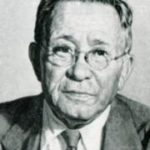
John L. Bernstein serves as President of HIAS (1917-1925).
1919
HIAS opens a Chicago branch. Jacob R. Fain is General Manager of HIAS (1919-1920). Chief Clerk Isaac L. Asofsky is appointed Assistant General Manager, 1920.
1921
Emigdirect founded. HIAS buys the former Astor Library on Lafayette Street.
1922
HIAS suspends most of its European offices, with the exceptions of those in Warsaw, one office in Romania, and one in Kovno, Lithuania.
1923
HIAS Immigrant Bank established.
1924
Isaac L. Asofsky is appointed General Manager of HIAS.
1926
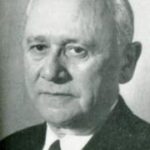
Abraham Herman serves as President of HIAS (1926-1947).
1927
In Paris, HIAS joins forces with the Jewish Colonization Association (styled both “ICA” and “JCA”), and the United Jewish Emigration Committee of Europe, known as Emigdirect, to form HICEM. HICEM effectively became the international arm of HIAS, especially after Emigdirect dropped out in 1934 and the ICA was restricted to using its funds exclusively in Britain (around the same time). HIAS, as HICEM, worked throughout the 1930s and early 1940s to rescue European Jews.
1934
National Coordinating Committed is formed as umbrella organization coordinating the work of agencies providing aid to immigrants. Evolves into National Refugee Service in 1939.
1938
Isaac L. Asofsky’s title is changed from “General Manager” to “Executive Director.”
1939
World War II begins. The National Refugee Service is established in New York as successor to the National Coordinating Committee to help European refugees fleeing Nazi persecution. HICEM establishes an office in Brussels, called BEL-HICEM or “Belhicem.”
1942
HIAS-ICA Emigration Association (what remained of HICEM in Paris) is dissolved by the Vichy government, and reestablished as an American organization on June 30.
1945
November, after the end of World War II, HICEM is dissolved and replaced by HIAS-only offices, HIAS-Europe and HIAS-France.
1946

Samuel A. Telsey serves as President of HIAS (1946-1952). United Service for New Americans (USNA) formed from merger of the National Refugee Service with the Service to Foreign Born of the National Council of Jewish Women.
1949
HIAS and the Joint Distribution Committee (JDC) form the Displaced Persons Coordinating Committee in cooperation with the United Service for New Americans.
1952

Ben Touster serves as President of HIAS (1952-1956). Isaac L. Asofsky announces his retirement and Maurice Eigen is appointed Acting Executive Director of HIAS.
1953
Arthur T. Jacobs is appointed Acting Executive Director of HIAS.
1954
HIAS lays the cornerstone for what will become HIAS House in the Negev (alternatively referred to as the “Beersheba Hostel”) at the request of the Israeli government, specifically for housing scientific and technical workers to help develop the Negev region. On August 24, 1954, HIAS merges with the United Service for New Americans (USNA) and the Migration Department of the American Jewish Joint Distribution Committee to form the United HIAS Service (UHS). Arthur Greenleigh is appointed Executive Director of HIAS.
1955
HIAS opens offices in Casablanca and Tangier.
1956
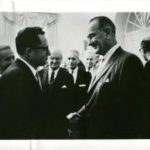

James P. Rice is appointed Executive Director of HIAS; Murray I. Gurfein serves as President. As the Hungarian Revolution and the Suez Crisis (1956-1957) create their own refugee crises, HIAS works as part of the President’s Committee for Hungarian Refugee Relief, and ferries Jews out of Egypt.
1957
Camp Foehrenwald, the last Jewish Displaced Persons Camp in Germany, closes. Abner Bregner is elected President of HIAS and serves until his death in June of this year.
1958
Carlos L. Israels serves as President of HIAS (1958-1960).
1959
On January 1, 1959, Cuban rebels oust Fulgencio Batista. In response, many Cuban Jews emigrate to the USA. HIAS closes its offices in Tangier and Casablanca after the Moroccan government refuses to recognize legal existence of HIAS under Moroccan law.
1960
Murray I. Gurfein serves a second term as President of HIAS (1960-1967).
1961
Morocco relaxes laws prohibiting emigration to Israel. President Kennedy establishes the Cuban Refugee Program, in which HIAS is heavily involved.
1962
Algerian independence leads to large flood of Jewish refugees (90% of its Jewish population leaves); HIAS assists with their immigration.
1964
Executive Vice-President James P. Rice meets with Lyndon Johnson and other Jewish leaders at the White House, circa 1964-1965.
1965
October 3, 1965, President Johnson signs Public Law 86-236, the Immigration and Nationality Act of 1965, also known as the Hart-Celler Act, which HIAS had lobbied for and which greatly affected their aid activities. HIAS sells HIAS House to the Institute for Higher Learning in the Negev, run by the city of Beersheba.
1966
Gaynor I. Jacobson is appointed Executive Vice President (new title for Executive Director) of HIAS.
1967

Carlos L. Israels serves a second term as President of HIAS (1967-1969). In the aftermath of the Six-Day War, the situation for Jews in the Middle East and North Africa is critical. In Egypt, all male Jews aged 16 and older are interned. HIAS takes an interest in securing their freedom and assisting their emigration. Meanwhile, Jewish emigration from Russia increases after Soviet Premier Aleksei Kosygin allows it in a speech on December 3, 1966; and Vietnamese refugees become an interest to American Council for Voluntary Agencies for Foreign Service (ACVA, of which HIAS is a member) and the JDC.
1968
Emigration from Poland increases after a spike in anti-Semitic attacks and policies, mostly in reaction to the Six-Day War. Known simply as “March 1968,” the government crackdown scapegoated Polish Jews and was officially “anti-Zionist,” but de facto anti-Semitic, in implementation.
1969
Harold Friedman serves as President of HIAS (1969-1973).
1972
At the request of the Department of State, HIAS helps evacuate Asian (mostly Indian) and Asian-Ugandan people from Uganda after President Idi Amin ordered the expulsion of the country’s Asian minority (approximately 80,000 people).
1973
Carl Glick serves as President of HIAS (1973-1979). The 1973 Arab–Israeli War. Emigration from Syria increases.
1975
Organization’s name is changed from United HIAS Service, Inc. to HIAS, Inc. From 1975-1979, acting on the request of the US government, HIAS helps resettle thousands of Indochinese refugees, including the “boat people” of Vietnam, through the cooperation of Jewish Family Services across the US.
1979
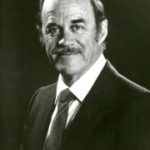
Edwin Shapiro serves as President of HIAS (1979-1984).
1982
Leonard Seidenman is appointed Executive Vice President of HIAS.
1983
HIAS begins to assist US and Israeli forces in bringing Ethiopian Jews (Beta Israel) out of Africa and resettling them in Israel, culminating in Operation Moses (November 1984 to January 1985) and Operation Joshua (March 1985). HIAS also begins working with Iranian Jewish refugees.
1984
Karl D. Zukerman is appointed Executive Vice President of HIAS; Robert L. Israeloff serves as President (1984-1988)
1987
Filming of HIAS documentary, “To Redeem the Captive … the Story of HIAS,” begins, is completed in 1988.
1988

Ben Zion Leuchter serves as President of HIAS (1988-1992).
1992

Martin A. Wenick is appointed Executive Vice President of HIAS; Martin Kesselhaut serves as President (1992-1995).
1994
January 1, 1994, HIAS takes over the function of the Refugee Resettlement department of the Council of Jewish Federations and Welfare Funds, including the management and administration of federal grants.
1995

Norman D. Tilles serves as President of HIAS (1995-1998).
1998
Leonard Glickman is appointed Executive Vice President of HIAS. His title becomes President and CEO in 2001. Neil Greenbaum serves as President of HIAS (1998-2003). His title becomes Chair of the Board in 2001.
2004
Jerome S. Teller serves as Chair of HIAS board (2004-2007).
2005
Neil Greenbaum is appointed President and CEO (2005-2006).
2006
Gideon Aronoff is appointed President and CEO (2006-2012).
2008
Michael Rukin serves as Chair of HIAS board (2008-2010).
2010
Marc Silberberg serves as Chair of HIAS board (2010-2013).
2012
Mark Hetfield is appointed Interim President and CEO; assumes title officially soon thereafter (2012-present).
2013
Dale M. Schwartz serves as Chair of HIAS board (2013-2016).
2016
Diane F. Lob serves as Chair of HIAS board (2016-present).

